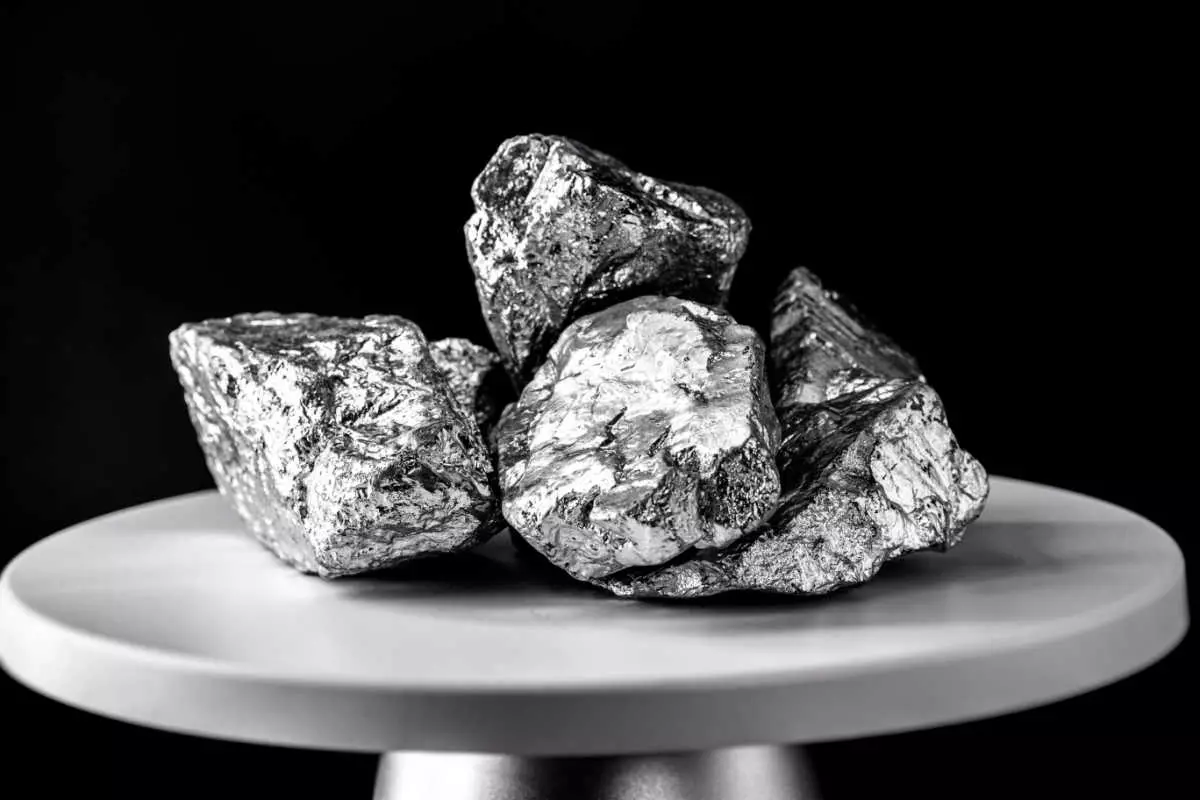Did you know that it takes a staggering 10 tons of raw ore to produce just one ounce of platinum? A metal rarer than gold and silver, platinum has captivated the hearts and minds of people for centuries with its breathtaking luster and unparalleled strength.
As an industry expert once said, “Platinum is the ultimate expression of rarity, refinement, and prestige.”
But what exactly makes platinum so expensive? Why does this illustrious metal command such a lofty price tag compared to its precious metal counterparts like gold and silver?
In this article, we’ll delve into the top five reasons why is platinum so expensive.
Join us as we venture into the mesmerizing world of platinum and unravel the mysteries behind its extravagant price tag.
Platinum History
The discovery of the precious metal is sometimes accredited to Spanish conquistadors that arrived in the Americas in the 16th century. However, the Spaniards viewed platinum as a crude metal, naming it platina to mean “little silver,” which delayed the rise of platinum as a precious metal.
In the 19th century, platinum became widely used in the jewelry industry due to its durability and resistance to tarnishing. However, platinum remained difficult to extract and refine, which is why it has always been one of the most expensive metals in the world.

During the 19th century, platinum was so rare and valuable that it was referred to as “the metal more precious than gold.” This is because the extraction process was time-consuming and labor-intensive.
Today, it is still used for industrial purposes like silicones and electronics, but it remains a sought-after precious metal for investment and jewelry purposes. Nevertheless, the cost of platinum remains high due to the limited supply of the metal, its complex extraction process, and the increased demand for it in various industries.
Why Is Platinum Valuable?
Platinum is a soft, heavy, silvery-white colored precious metal. Its value is derived from several factors. All of these factors combined push platinum’s price higher than gold and silver:
- Rarity. Platinum is one of the rarest metals on Earth, making up just 0.005% of the Earth’s crust. Only around 190 metric tons are produced annually. To compare, the annual production of gold is about 3,000 tons.
- Industrial Demand. Platinum is an industrial metal that is used to produce catalytic converters in automobiles and electronic components, refine chemicals and petroleum, and help produce other high-tech applications.
- Investment Demand. Investors view platinum as a hedge against inflation and currency devaluation, which further increases its demand.
- Jewelry Demand. Platinum is often used to produce high-end jewelry, such as necklaces and rings, due to its rarity, durability, and luster.
- Extraction and Refining Process. Finally, platinum’s extraction and refining process is very complex and expensive, which further drives up its cost.
How Much Platinum Is in the World?
Total platinum reserves in the world are estimated to be around 70,000 metric tons. For comparison, global gold reserves are approximately 200,000 metric tons, while the reserves of silver are about 570,000.
Almost 90% of all platinum is found in South Africa. Other major producers include Russia, Zimbabwe, and the United States.
However, mining and extraction processes are expensive and complex, and geopolitical factors can impact production levels. For example, political unrest in mining regions can disrupt production and further increase the cost of mining.
Mining and Extraction Process
Platinum is often found in trace amounts alongside other metals, like palladium and rhodium. As a result, the process is time-consuming and costly, contributing to the high price of platinum.
The mining and extraction process of platinum involves drilling, blasting, and crushing the ore. The ore is then processed through flotation and chemical reactions to separate the platinum from other metals.
According to the World Platinum Investment Council, the average cost of production for primary platinum mines is about $953 per ounce compared to $800 per ounce for gold and $12.90 for silver.
Environmental Impact
Additionally, the extraction of platinum can have a severe environmental impact, including air and water pollution, greenhouse gas emissions, soil degradation, and the destruction of natural habitats.
This is why mining companies are under constant pressure to minimize their carbon footprint and develop sustainable practices. Many NGOs are also campaigning to recycle platinum, which can significantly reduce the necessity to mine more resources.
How Rare Is Platinum?
Platinum is one of the rarest metals on Earth. According to the United States Geological Survey, platinum is 30 times rarer than gold. For comparison, if all of the platinum in the world was mined and melted into an Olympic-sized pool, it would barely reach your ankles. On the other hand, gold would fill three such pools.
Statistics of Platinum Production
Global platinum production declined in 2022, experiencing a 5.7% drop. Nevertheless, approximately 190 metric tons of platinum have been produced in the past year.
South Africa is still the largest contributor to global platinum production, followed by the U.S. Unfortunately, the combined output of the two countries has declined in past years.
However, Russia, Zimbabwe, and Canada are increasing production, which offsets global production. As a result, their combined production has increased from 1,295.9 kilo ounces in 2021 to 1,317.3 kilo ounces in 2022.
Is Platinum More Expensive Than Gold?
When it comes to the age-old debate of whether platinum is more expensive than gold, the answer isn’t always straightforward. Historically, platinum has often held a higher price tag, but the gap between the two has fluctuated over time, with gold occasionally surpassing platinum in value.
For instance, as of 2023, a one-ounce American gold Eagle coin costs approximately $2,320, while a palladium American Eagle coin costs about $1,202.

However, in other applications like jewelry and industrial products, platinum can be more expensive. For example, a white gold ring typically costs 40% to 50% less than a platinum engagement ring.
This price difference is primarily because platinum is denser and requires more resources to craft than gold. Additionally, due to the rarity of platinum and the difficulty of processing it, the jewelry made from it is scarcer and thus more expensive.
Platinum Investment
Platinum is a popular choice for those seeking to diversify their portfolio. Similar to gold, it is often used as an investment tool for investors looking to hedge against inflation and U.S. Dollar devaluation.
Platinum Investment Types
Investors can invest in platinum in several ways. Each of these options has its own set of potential advantages.
- Platinum Coins: A popular choice among collectors and investors, platinum coins are minted by various governments and come in different weights and designs. These coins offer a tangible way to own platinum, allowing you to enjoy the metal’s physical beauty while building a diverse investment portfolio.
However, keep in mind that coins typically carry a premium over the spot price of platinum, and storage and insurance costs can add up over time. The average price of a one-ounce platinum coin is about $900 to $1,000.
- Platinum Bars: Similar to coins, platinum bars provide a direct route to owning physical platinum. Bars often come with lower premiums compared to coins, making them a more cost-effective option for some investors.
However, as with coins, you’ll need to consider storage and insurance expenses, and liquidity might be a concern when it’s time to sell. The average price of a platinum bar ranges from $30 for a single-gram bar to more than $32,000 for the largest bars.
- Exchange-Traded Funds (ETFs): For those who prefer a more hands-off approach, platinum ETFs offer an alternative to owning physical metal. Platinum ETFs allow you to invest in a basket of platinum-related assets rather than a single type. ETFs are traded like stocks on an exchange.
Even though you don’t own physical metal, this option lets you diversify your benefits and is usually more liquid, meaning they can be bought and sold more easily. Additionally, you won’t have to worry about the hassle of storage and insurance. On the downside, ETFs come with management fees, and you don’t have direct ownership of the metal. The average price for a platinum ETF is between $80 to $120 per share.
- Mining Stocks: Another indirect way to invest in platinum is by buying shares of companies involved in mining and production. This option allows you to capitalize on the growth potential of the mining industry while maintaining a level of liquidity similar to stocks.
However, investing in mining stocks carries additional risks, as you’re exposed to fluctuations in platinum prices, company-specific factors, and broader market trends. The average cost for a platinum mining company stock ranges between $5 and $50 a share.
Platinum Jewelry
One of the most significant demands for platinum comes from the jewelry industry. Its popularity has only increased over time.
Apart from being durable and rare, platinum jewelry has a brilliant luster that doesn’t fade over time and is hypoallergenic, making it a great choice for those with sensitive skin.

Most platinum jewelry comes in the form of engagement rings, earrings, bracelets, and necklaces. An average platinum wedding band could cost around $800 to $1,500, while a more elaborate engagement ring could cost between $2,000 and $5,000 or more.
Additionally, it has cultural significance worldwide, especially in Asia, where it is highly sought-after for weddings and other celebrations.
Industrial Uses of Platinum
Platinum is also widely used in various industries due to its unique properties, such as resistance to corrosion, high melting point, and catalytic properties. Here are some of the industrial uses for platinum:
Automotive Industry
Car production companies use platinum catalytic converters in vehicles to convert harmful gasses into less harmful pollutants. As a result, it helps reduce emissions and decrease the damage to the air quality.
While other metals, such as palladium and rhodium, can partially replace platinum in catalytic converters, none match platinum’s efficiency and effectiveness in reducing emissions.
Finally, platinum is also used in automobiles’ spark plugs, sensors, and other components.
Petroleum and Chemical Industry
Platinum catalysts are used to produce chemicals such as fertilizers, plastics, and pharmaceuticals. It is also used in refining crude oil to produce gasoline, diesel, and other fuels.
The refining process involves breaking down large hydrocarbons into smaller, more useful molecules. Platinum catalysis can facilitate this process, making it faster and more efficient.
Electrical Industry
Because of its durability and conductivity, the electrical industry uses platinum to produce hard disks, LCD screens, and other electronic components. It is also used in the production of fuel cells, which are used to generate electricity in a cleaner and more efficient way.
Medical Industry
Platinum is also used in various medical applications such as pacemakers, dental implants, and chemotherapy drugs. For instance, it is used as a component in some cancer-fighting medicines, such as cisplatin, carboplatin, and oxaliplatin.
It is also used in diagnostic equipment like X-ray and magnetic resonance imaging (MRI) machines.
Future of Platinum
The demand for platinum is expected to continue to rise due to its unique properties and uses in various industries.
One area of future growth is in the development of fuel cell technology, which requires platinum as a catalyst. For example, Proton Exchange Membrane Fuel Cells (PEMFCs) use platinum-based catalysts and are now found in zero-emission vehicles and green energy systems, contributing to a more sustainable future.
Given how platinum has already proven itself helpful to the medical industry, we could see even further growth and advancement in platinum-based drug delivery systems and cancer treatments.
One such innovation is the advent of platinum-coated nanoparticles as drug delivery systems, which exhibit exceptional targeting capabilities and reduced side effects.
Additionally, researchers are delving into the potential of platinum compounds for the treatment of various cancers, including their ability to inhibit tumor growth and enhance the efficacy of existing therapies.
Environmental considerations will also play a part in the future of platinum. As the world moves toward more sustainable energy sources, the demand for platinum in fuel cells and other clean energy technologies is expected to increase. However, the scarcity of metal still poses a threat to these applications, as scientists believe the world will run out of platinum by 2050.
As a result, tackling platinum scarcity and its environmental impact is a top priority for industries worldwide. Therefore, new mining technologies are emerging to make extraction processes more efficient, eco-friendly, and less wasteful.
For instance, bio-mining uses microorganisms to extract platinum group metals from low-grade ores, providing a greener alternative to traditional methods.
Moreover, researchers are looking for alternative materials that could replace platinum in some applications. For example, scientists are investigating the potential of palladium and rhodium as substitutes for platinum in catalytic converters.
In fuel cell technology, the focus is on non-precious metal catalysts that maintain efficiency without relying on scarce resources like platinum.
Sum Up
There are various reasons why platinum is so expensive. Particularly, platinum comes with a high price tag due to its rarity and demand in multiple industries, such as automotive, petroleum, chemical, electrical, and medical.
Moreover, the difficulty of mining and extracting platinum further drives its price. It is currently valued as a durable element and has cultural significance worldwide.
FAQ
Can Platinum Be Recycled, and if So, How?
Yes, platinum can be recycled. Recycled platinum mainly comes from discarded electronic products, catalytic converters, and jewelry. The recycling process involves refining and purifying the platinum scrap to produce pure platinum. This process is typically less expensive and more environmentally friendly than mining and refining new platinum.
Are There Any Health Concerns Associated With Exposure to Platinum?
Platinum is generally considered to be a safe and non-toxic metal. There are no known health concerns associated with wearing platinum jewelry or handling pure platinum. However, some platinum compounds used in industrial processes, such as platinum salts, can be toxic if inhaled or ingested. Therefore, appropriate safety measures must be taken when working with platinum compounds.
Can Platinum Be Used as a Currency?
While platinum was used as a form of currency in the past, it is not used as a currency today. However, some platinum coins and bars are available for investment purposes.
James Miller is a Senior Content Writer at McGruff.com. He has a background in investing and has spent most of his career in the financial industry. He can trace his family tree back to the California Gold Rush when his ancestors risked it all to make it big in the west. He feels like he's following in their footsteps as he strives to make sense of today's gold market.
